Families from many cultures around the world make and enjoy dumplings, and this recipe is Korea’s version. Every Korean family has their own dumpling (mandu) recipe, just like they have their own kimchi recipe, but this recipe for pork dumplings is kind of a general classic, which is why it was one of the first recipe videos I made when I started posting videos on YouTube.
Everyone likes mandu, and one of the great things about it is that you can make a lot at once, freeze them, and then use them over time in so many different ways. These days, so many of us are suffering from inflation, and I was thinking what kind of recipe I could share that would help us all keep our families well-fed deliciously. It seems like a good time to remake this video and refresh this recipe. My old mandu recipe was loved by many over the years and I hope this updated recipe and video is also used and enjoyed for many more.
Make this mandu for your family and let’s beat this inflation together! And then once you have them in your freezer you can fry them, steam them, or make soup from them. I show you all of this in the video and in the recipe below.
No matter what filling is in mandu, the ingredients should go well together with complementary tastes and textures. This mandu has pork in it, but you could replace that with beef, or with mushrooms for a vegetarian version. I would suggest using dried shiitake mushrooms in a vegetarian version. Soak them in water until they are soft, and then chop them up thinly and stir fry them just as you would pork in this recipe. Also, replace the anchovy kelp stock with vegetarian stock and you are all set.
You can also buy mandu in the store, but for me, homemade is the best. I try to keep positive with an open mind but mandu from the store always smells too porky to me, and the vegetables are too ground. You might agree with me. This is why my freezer is full of homemade mandu! The one exception is the mandu sold at my mom’s church. All the seniors would get together once a week and make mandu like an assembly line, with 12 different ingredients. They don’t make it anymore, I’m not sure why, but that mandu was clean and delicious and always sold out. But I guarantee this recipe is better!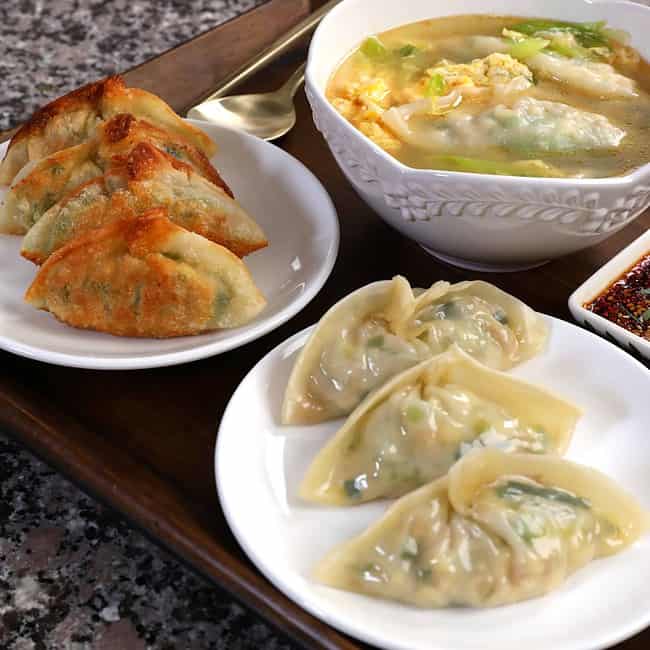
Ingredients
Makes about 80 dumplings
- 80 regular size mandu skins (or make homemade mandu skins)
- 1 pound pork belly (or pork shoulder), ground
- 4 garlic cloves, minced
- 1 teaspoon peeled ginger, minced
- 1 tablespoon soy sauce
- 1 teaspoon ground black pepper
- 1 tablespoon toasted sesame oil
- 1 pound zucchini (or any tender green squash), cut into matchsticks
- 1 medium sized onion (about 5 ounces), chopped
- 1 teaspoon kosher salt
- 1 teaspoon cooking oil
- 2 ounces dangmyeon (sweet potato starch noodles)
- 4 ounces buchu (Asian chives), chopped
- 12 to 14 ounces of mung bean sprouts
- 1 pound medium or firm tofu
Directions
Prepare the pork and start the zucchini & onion:
- Add the ground pork to a large skillet and cook over medium high heat for 1 minute, stirring with a wooden spoon.
- Add garlic, ginger, soy sauce, and ground black pepper one by one. Keep stirring and cooking until the pork is cooked thoroughly, about 3 to 4 minutes.
- Remove from the heat and stir in 1 teaspoon sesame oil. Transfer to a large bowl.

- Combine the zucchini, onion, and salt in a bowl. Mix them well and set aside for 10 minutes.
Prepare the noodles and add the Asian chives:
- Bring a large pot of water to a boil over medium high heat. Cook the starch noodles for 7 to 8 minutes until soft.
- Strain the noodles and reserve the hot water in the pot.
- Rinse the noodles in cold running water. Drain well.
- Chop the noodles into small pieces and add to the pork in the bowl of filling.
- Add the Asian chives to the bowl of filling.
Prepare the mung bean sprouts:
- Bring the reserved hot water to a boil and blanch the mung bean sprouts for 1 minute.
- Drain the sprouts and rinse them in cold running water.
- Drain the sprouts and squeeze out excess water. Add them to the bowl of filling.

Prepare the zucchini and onion:
- Heat 1 teaspoon cooking oil in a large skillet.
- Squeeze out the excess water from the zucchini and onion mixture.
- Add to the skillet, stirring with the wooden spoon for 1 minute. Add it to the bowl of filling

Prepare the tofu and season the filling:
- Wrap the tofu in a cotton cloth or a piece of cheese cloth and squeeze out excess water. Add it to the bowl of filling.

- Add 1 teaspoon salt, ½ teaspoon ground black pepper, and 2 teaspoons sesame oil to the filling. Mix well.

Make mandu:
- Set out a small bowl of water. Prepare a large tray or baking sheet lined with parchment paper or food plastic wrap.
- Remove one dumpling skin from the package and put it on your palm. Dip your index finger into the water and wet the edges of the skin so that it will seal easily.
- Spoon a heaping tablespoon of the filling into the center of the skin. Fold the skin over the filling, and press the wet edges to seal. Place on the parchment paper in the tray or baking sheet.



- Repeat with the remaining dumpling skins and filling, placing the mandu on the tray with enough space between them so they don’t touch.

- Freeze them at least 4 to 5 hours, or overnight, then transfer them to zipper-lock bags for longer freezing. When you are ready to use, defrost them in the refrigerator for a few hours and cook.
Dipping sauce recipe
- 1 tablespoon soy sauce
- 1 tablespoon vinegar
- ½ teaspoon toasted sesame seeds
- ½ teaspoon gochu-garu (Korean hot pepper flakes) optional
- 1 tablespoon chopped green onion
Combine all ingredients, stir together, and serve.
How to make fried dumplings
- Heat 3 to 4 tablespoons cooking oil in a skillet. Add 4 to 8 dumplings, without crowding them, and cook over medium heat for about 2 minutes until the bottoms turn golden brown.
- Occasionally turn them over and cook for another 3 to 4 minutes until all sides are golden brown and crunchy. Serve with dipping sauce.
How to make steamed dumplings
- Boil water in a steamer. Line the steamer rack or basket with parchment paper.
- Add 4 to 8 dumplings, depending on the size of your steamer. Cover and steam for 7 minutes over medium heat. Serve with dipping sauce.
How to make dumpling soup (manduguk)
Serves 1
- Bring 2 cups of anchovy kelp stock or vegetable stock in a small pan. Stir in ½ teaspoon salt.
- Add 4 to 5 dumplings along with 1 clove of minced garlic and 1 sliced green onion.
- Stir them gently to prevent the dumplings from sticking to the bottom of the pan. Cook for about 5 minutes until the dumplings float to the surface.
- Crack and beat 1 egg and add to the boiling soup. Cook another minute until the egg is cooked.
- Remove from the heat and add 1 teaspoon toasted sesame oil and ¼ teaspoon ground black pepper. Serve right away.
Maangchi's Amazon picks for this recipe
It's always best to buy Korean items at your local Korean grocery store, but I know that's not always possible so I chose these products on Amazon that are good quality. See more about how these items were chosen.



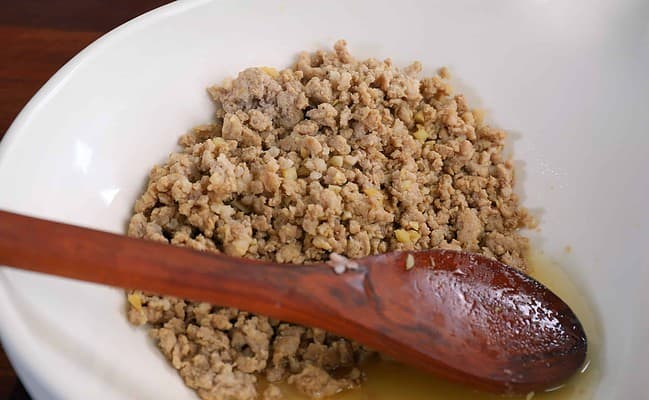
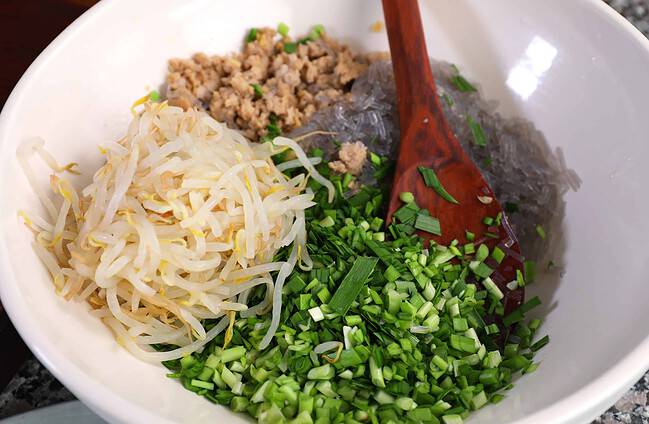
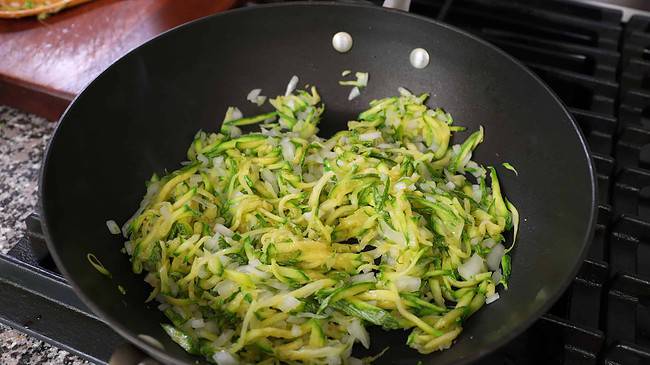
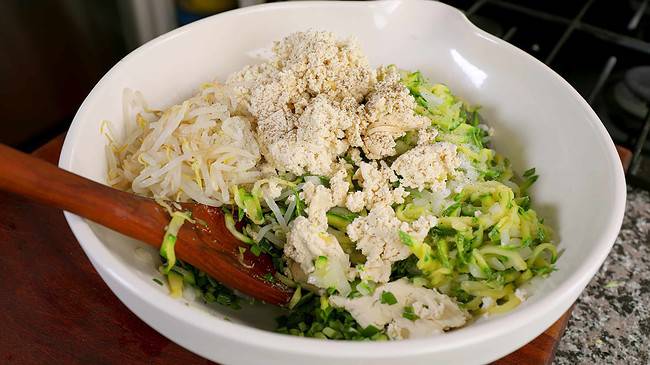
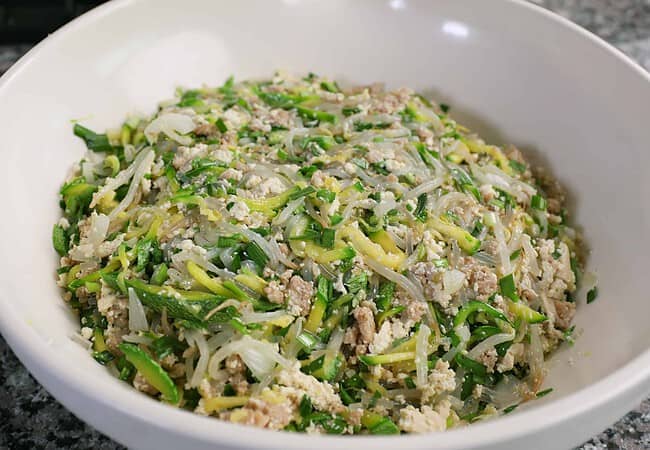
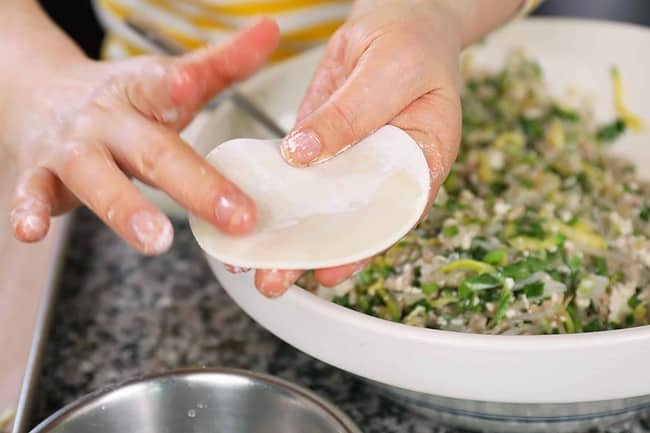
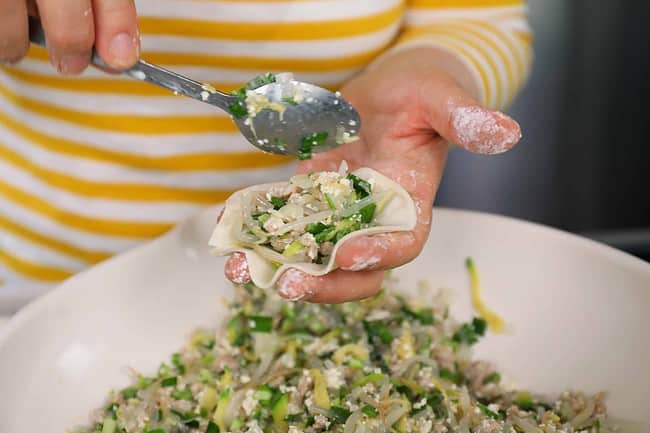
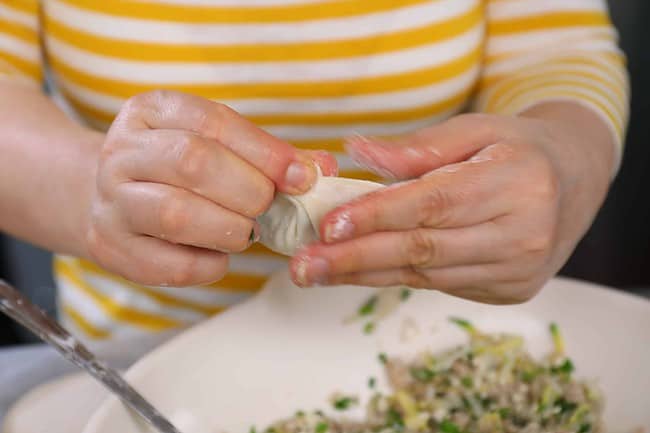
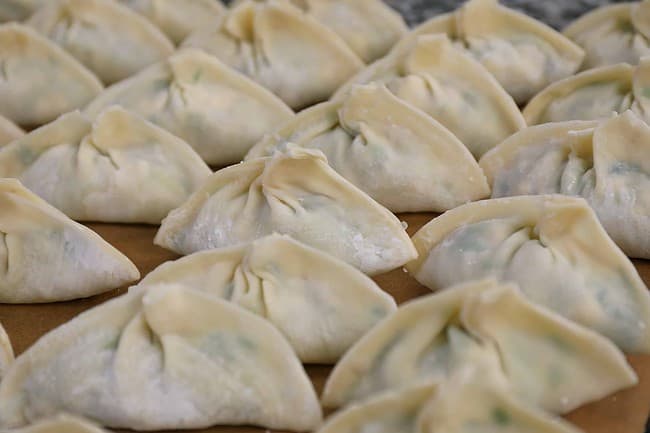
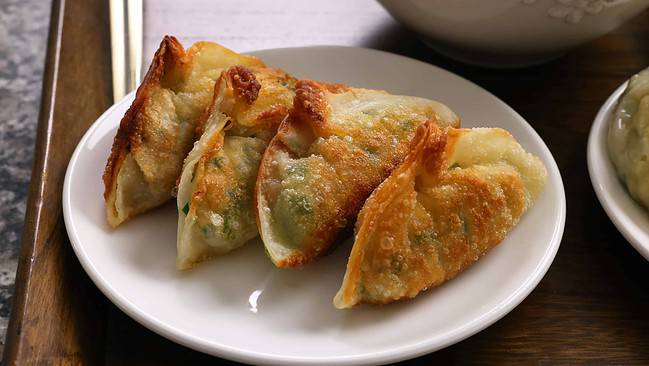
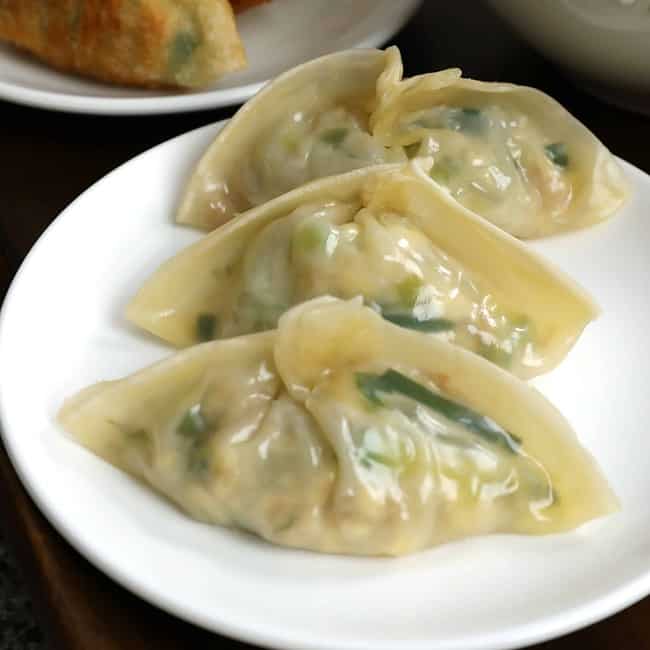
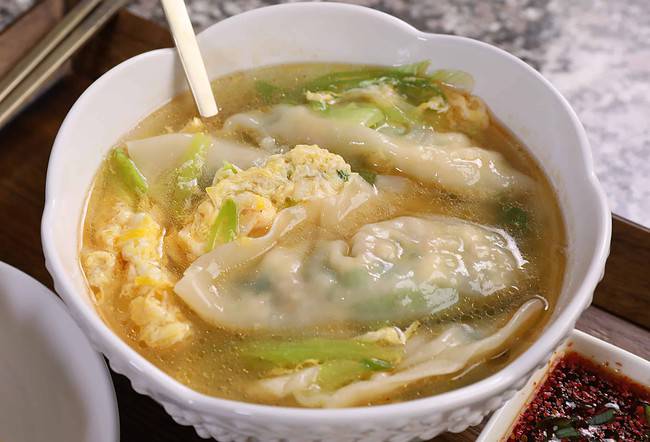








![[OTTOGI] Premium Roasted Sesam...](https://m.media-amazon.com/images/I/41DixbNS9AL._SL160_.jpg)

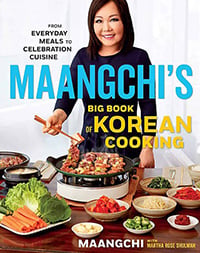




















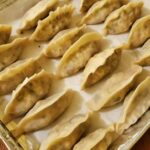
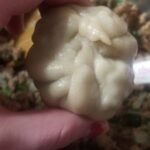
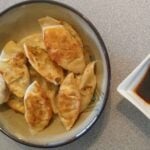
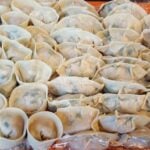

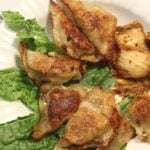

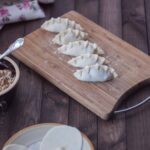


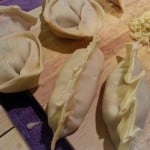

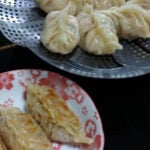
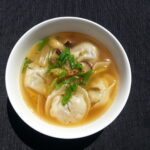
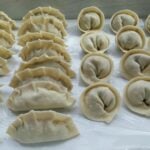
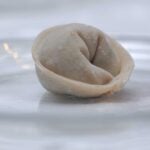
annyeong! i actually watched this vid last year but never had a time to make it T^T i hope i can make this week if my dad gave me money hehe. I love korean dish especially kimchi! my parents have a samgyupsal restaurant in the Philippines and thats how i learned some of korean dish. thanks for sharing your recipes to us!
Hi Maangchi!
Would this recipe still work if I use corn starch noodles?
Yes, I think any starch noodles will work well. Good luck!
I learned to cook korean dishes because of you. This one is my favorite. Made these many times for my family & friends. Your recipes are perfect made it easier for us to make. I am one of your many fans. Thank u so much
See full size image
Hi Maangchi, I love the new recipe for Mandu! I started making Mandu with your recipe in 2009. I usually make 150-200 and freeze them on a cookie sheet and put them in Ziploc bags. I can’t wait to try your new recipe. Thanks for teaching me to make so many different Korean recipes. I sit down when I make Mandu; saves a sore back!
Charles (aka Mandu King)
See full size image
Hi Mandu King, I’m so happy to hear from you!
You are still making mandu on a regular basis for your family. You freeze them and keep them in Ziploc bags just like me!
“I sit down when I make Mandu; saves a sore back!” You should work with all of your family members. : )
I’d like to meet you and your family someday, Charles!